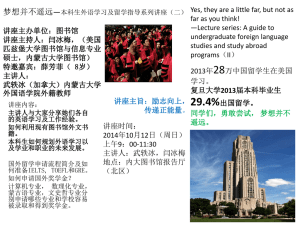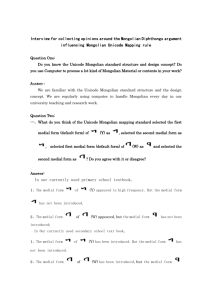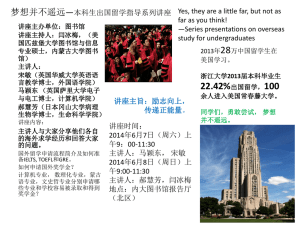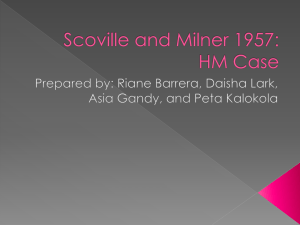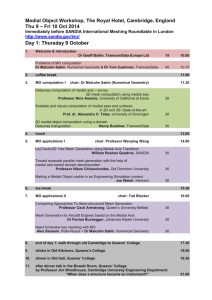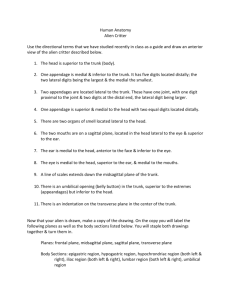LetterbyLetter2
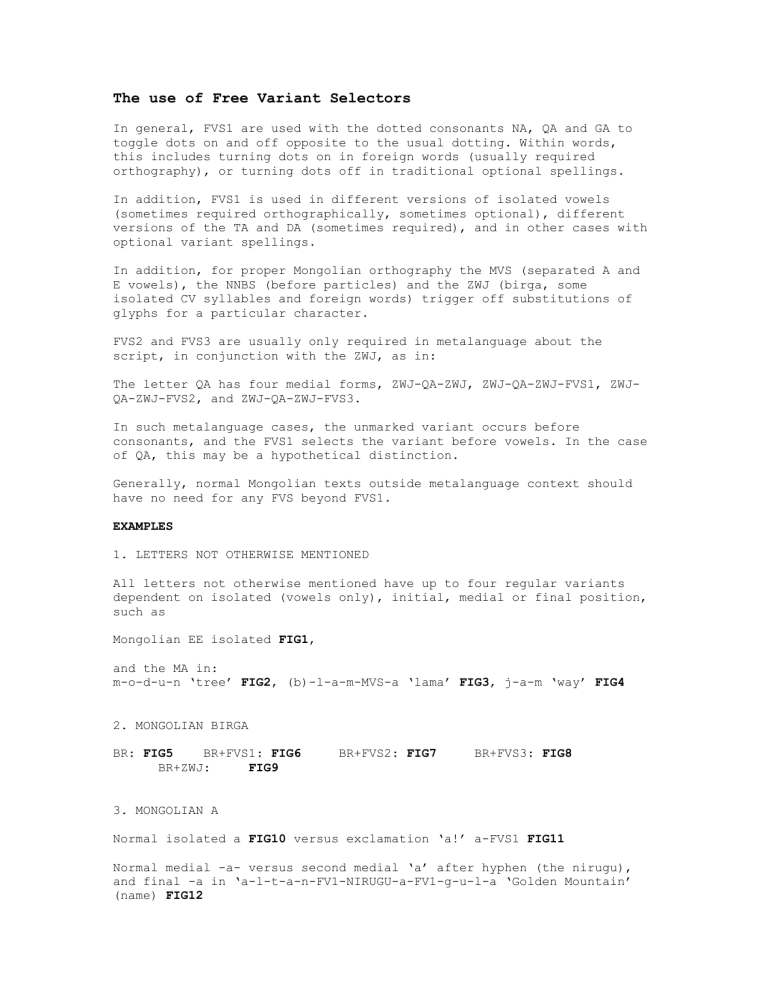
The use of Free Variant Selectors
In general, FVS1 are used with the dotted consonants NA, QA and GA to toggle dots on and off opposite to the usual dotting. Within words, this includes turning dots on in foreign words (usually required orthography), or turning dots off in traditional optional spellings.
In addition, FVS1 is used in different versions of isolated vowels
(sometimes required orthographically, sometimes optional), different versions of the TA and DA (sometimes required), and in other cases with optional variant spellings.
In addition, for proper Mongolian orthography the MVS (separated A and
E vowels), the NNBS (before particles) and the ZWJ (birga, some isolated CV syllables and foreign words) trigger off substitutions of glyphs for a particular character.
FVS2 and FVS3 are usually only required in metalanguage about the script, in conjunction with the ZWJ, as in:
The letter QA has four medial forms, ZWJ-QA-ZWJ, ZWJ-QA-ZWJ-FVS1, ZWJ-
QA-ZWJ-FVS2, and ZWJ-QA-ZWJ-FVS3.
In such metalanguage cases, the unmarked variant occurs before consonants, and the FVS1 selects the variant before vowels. In the case of QA, this may be a hypothetical distinction.
Generally, normal Mongolian texts outside metalanguage context should have no need for any FVS beyond FVS1.
EXAMPLES
1.
LETTERS NOT OTHERWISE MENTIONED
All letters not otherwise mentioned have up to four regular variants dependent on isolated (vowels only), initial, medial or final position, such as
Mongolian EE isolated FIG1 , and the MA in: m-o-d-u-n ‘tree’ FIG2 , (b)-l-a-m-MVS-a ‘lama’ FIG3 , j-a-m ‘way’ FIG4
2.
MONGOLIAN BIRGA
BR: FIG5 BR+FVS1: FIG6
BR+ZWJ: FIG9
BR+FVS2: FIG7 BR+FVS3: FIG8
3. MONGOLIAN A
Normal isolated a FIG10 versus exclamation ‘a!’ a-FVS1 FIG11
Normal medial -a- versus second medial ‘a’ after hyphen (the nirugu), and final -a in ‘a-l-t-a-n-FV1-NIRUGU-a-FV1-g-u-l-a ‘Golden Mountain’
(name) FIG12
QUESTION: Is this interpretation correct, especially as regards first
FVS1 ?
See also irregular m-a-FV1 FIG16 versus regular m-a FIG17
QUESTION: Are there cases in which this is orthographically necessary, or is this always optional? Better example?
NOTE : separated -a in word root versus separated -a in dative: b-a-g-MVS-a ‘child’ FIG13 versus q-u-d-u-g-NNBS-a ‘to the well FIG14
NOTE: The -a takes a separate medial form when being the first letter of a particle: NNBS-a-ch-a(ablative, masc.) FIG15
NOTE : L-a in foreign names such as La Paz: l-a-ZWJ-space-p-a-z FIG16
QUESTION: Is this interpretation correct ?
NOTE : words sometimes transcribed as -ua are correctly spelled -w-MVSa; use FVS1 to get dotted glyphs: ch-i-n-w-MVS-a ‘wolf’ FIG17 (versus ch-i-n-FVS1-w-MVS-a FIG18 )
FVS2 for third medial -a- is only used in metalanguage.
QUESTION: Is this correct ?
4.
MONGOLIAN E e-b-e-s-ue ‘hay’ FIG19 regular form versus e-FVS1-b-e-s-ue FIG20 traditional form
See also irregular m-e-FV1 FIG21 versus regular m-e FIG22
QUESTION: Are there cases in which this is orthographically necessary, or is this always optional? Better example? Or is this only used in metalanguage?
NOTE : The -e takes the usual initial form when being the first letter of a paticle: NNBS-e-ch-e (ablative, fem.) FIG23
QUESTION: Is this interpretation correct? I think it is, otherwise, why is there no “second medial form” mimicking the “a third medial form”?
NOTE : t-e-r-e ‘that’ FIG24 versus ue-n-MVS-e ‘price’ FIG25 versus dative ‘to the donkey’ e-l-j-i-g-e-n-NNBS-e FIG26
5.
MONGOLIAN I
QUESTION: when does second medial -i- with FVS1 occur? After hyphen?
Example?
NOTE : -i as accusative particle: NNBS-i FIG27
NOTE : The particle sometimes transliterated as -i-i-n is correctly encoded as NNBS-y-i-n FIG28
NOTE : Diphthongs such as a-i in non-final position are encoded as -a-ii-: s-a-i-i-n ‘good’ FIG29
QUESTION: IS THIS CORRECT, or is it s-a-y-i-n, or s-a-y-FVS1-i-n?
6.
MONGOLIAN O
Normal final -o o-m-o ‘milk’ FIG30 versus foreign word k-i-n-o-FVS1
‘cinema’ FIG31
QUESTION: where does second medial -o- with FVS1 occur? After hyphen?
Example?
NOTE : n-o-ZWJ FIG32 may be used in dictionary headings.
QUESTION: Is this a correct interpretation? or is it n-o-FVS1?
7.
MONGOLIAN U
QUESTION: where does second medial -u- with FVS1 occur? After hyphen?
Example?
NOTE : there are special glyphs for u after the particle space: NNBS-u-n
FIG33 , NNBS-u FIG34
NOTE : n-u-ZWJ FIG35 may be used in dictionary headings:
QUESTION: Is this a correct interpretation? or is it n-u-FVS1
QUESTION: shouldn’t there be a FVS1 for a final alternative -u in foreign words, such as N-a-s-a-u-FVS1, capital of the Bahamas, which is
spelled FIG36, or is that to be entered n-a-s-a-o? Same in M-a-s-e-r-u-
FVS1 spelled as FIG37.
8.
MONGOLIAN OE
There is one different glyph for the medial form in the first syllable, and for the medial in any subsequent syllable, as in d-oe-r-oe-g-e
‘stirrip’ FIG38 (note that some dictionaries would transliterate this as d-oe-r-ue-g-e).
When in foreign words however the first medial form is necessitated in a subsequent syllable, the second form is followed by a FVS1.
QUESTION: IS THERE AN ACTUAL EXAMPLE FOR -oe- RATHER THAN -ue-?
QUESTION: when is the third medial form using FVS2 necessary? After an hyphen? Example? Is FVS2 used in an actual example, or is FVS1 used in actual words, and FVS2 only in metalanguage?
QUESTION: Are there actual examples of different finals -oe and -oe-
FVS1, or is FVS1 in a final only used in metalanguage? Would ‘Roseau’
(capital of Dominica), r-o-s-ee-oe-FVS1 FIG39 be a good actual example?)
9.
MONGOLIAN UE
There is a variant glyph for isolated ue-FVS1 (as in ‘Wuyi shan’ Ue I
Sh-a-n a-g-u-l-a FIG40 ) versus regular ue FIG41 (the usual form in dictionary headings.)
There is one different glyph for the medial form in the first syllable, and for the medial in any subsequent syllable, as in q-ue-m-ue-n
‘human’ FIG42 . When in foreign words however the usual first-syllable medial form is necessitated in a subsequent syllable, the second character is followed by a FVS1, as in p-o-r-t-FVS1-ue-FVS1-g-a-l
FIG43 .
QUESTION: IS THIS THE RIGHT FULL ENCODING? That depends somewhat on whether the shape of the -g- is influenced by the preceding vowel (ue), in which case it should be g-FVS1, or by the following vowel, in which case no FVS is needed.
There are automatic medial forms for -ue after the particle space, both without and with intervening consonants: NNBS -ue FIG44 , NNBS-ue-n
FIG45 , NNBS-l-ue-g-e FIG46 (note: with -ue- taking on its form in a non-first syllable).
The usual final form is used in words such as d-ue-r-s-ue ‘form’ FIG47 ; in foreign words, an alternative form is used such as ‘Nauru’ in n-aue-r-ue FIG48 (note that the -ue- in a-ue- is considered a second syllable.)
QUESTION: Is the statement on -a-ue- correct?
QUESTION: Is Nauru a good example, or are there other examples of the two final variants, one usual and one with FVS1?
QUESTION: when is the third medial form with FVS2 necessary? After a hyphen? Example? Is FVS2 used in an actual example, or is FVS1 used in actual words, and FVS2 only in metalanguage?
10.
MONGOLIAN NA
The n has two general automatic medial forms, one dotted before vowels, one undotted before consonants: t-e-n-e-g ‘foolish’ FIG49 versus z-a-nd-a-n ‘sandalwood’ FIG50 .
The normal initial form is dotted, the normal final form undotted: n-ar-a-n ‘sun’, FIG51 .
When in traditional writings a dotted n is undotted, the FVS1 is used: n-FVS1-a-r-a-n ‘sun’ (tr.), FIG52 , a-n-FVS1-a-r ‘pomegranate’ (tr.)
FIG53 ; idem when the -n- is dotted when according to normal positional rules is not: ch-i-n-FVS1-w-MVS-a ‘wolf’ FIG54 , f-r-o-n-FVS1-t-FVS1
‘front’ FIG55 or Sibe H-a-n-FVS1 ‘Han dynasty’ FIG56.
The -n- takes on an automatic medial glyph after the NNBS: NNBS-n-a-r
FIG57 .
The -n as used in some foreign place names such as San Salvador can be derived with ZWJ: s-a-n-ZWJ-SPACE-s-a-l-w-a-d-o-r FIG58 .
QUESTION: Is this correct, or is an FVS1 after ZWJ necessary (i.e, is the space counted as a consonant or a vowel? Cf. altan- before nirugu.;
Also is the transliteration of -d-o-r correct?
NOTE : ue-n-MVS-e ‘price’ FIG59 versus q-a-g-a-n-NNBS-a ‘for the
Khaghan’ FIG60 versus b-a-g-a-n-FVS1-MVS-a ‘pillar’ (tr.) FIG60
The third medial form using FVS2, and the medial separate form using
FVS3 are only used in metalanguage. In running text, they are predictable from the context.
QUESTION: Is this correct? There are no non-predictable occurrences?
11.
MONGOLIAN BA
B has two alternative final forms, regular e-b ‘peace’ FIG61 versus traditional e-b-FVS1 FIG62 .
12.
MONGOLIAN QA
The letter q has different forms in masculine and feminine words: q-ag-a-n ‘Khaghan’ (masc.) FIG63 , g-a-q-a-i ‘pig’(masc.) FIG64 , q-ue-m-uen ‘human’ (fem.) FIG65 , e-q-e ‘mother” (fem.) FIG66 . It does not occur in final position, but before the MVS, this letter has a seemingly final form: a-q-MVS-a “elder brother” FIG67 . Note that in most transcription systems this letter is rendered differently before masculine vowels and feminine/neuter ones, e.g. qaghan or qaγan vs. kümün .
The medial dotted form and the pseudo-final form before MVS can occur in traditional spellings without the dots, when used with FVS1: g-a-q-
FVS1-a-i ‘pig’ (tr.) FIG67 , and a-q-MVS-FVS1-a, ‘elder brother’, FIG68 .
QUESTION: Is this interpretation correct? Are these the only cases of the first and fourth medial variants? Can the third medial variant occur outside the case mentioned here before MVS? I use here the order
MVS-FVS1 in analogy of ZWJ-FVS1; is this correct?
QUESTION: The Reference table seems to lack actual glyph forms for feminine q- and –q-, although examples using these forms occur elsewhere. Why do they not occur; because they are treated as ligatures? How does one refer to them in metalanguage?
QUESTION: when is second initial form with FVS1 used? IN TR170 IT DOES
NOT MAKE A DIFFERENCE IN Q-E; this probably is a mistake. Is this always optional or are there required examples? Should therefore the following be true:
An irregular initial dotted form can similarly be derived at using
FVS1: q-e-FVS1 ‘pattern’ FIG69 versus regular q-e FIG70 .
QUESTION: When are the feminine first and second isolate forms, the last with FVS1, used? Only in metalanguage and unfinished display?
FVS1, FVS2 and FVS3 are used in metalanguage to distinguish the dotted pre-vowel, the dotted pre-MVS, and the undotted pre-MVS variants from the unmarked undotted variant, the latter not occurring regularly however in running text: the glyph occurring before a consonant would be always interpreted as –g-.
QUESTION: Is this all correct?
13. MONGOLIAN GA
The letter g has different forms in masculine and feminine words, and in medial position before vowels and consonants: g-u-r-b-a-n ‘three’
(masc.) FIG71 , q-a-g-a-n ‘Khagan’ (masc.) FIG72 , o-g-t-u-l-q-u “cut off” (masc.) FIG73 , ch-a-g ‘time’ (masc.) FIG74 , g-e-m ‘evil’ (fem.)
FIG75 , oe-g-e-d-e ‘upward’ (fem.) FIG76 , oe-g-q-ue ‘to give’ (fem)
FIG77 , t-e-n-e-g ‘foolish’ (fem) FIG78 . Unlike QA, with which it shares medial and (pseudo)final forms, GA can occur before consonants and in final position. Note that in most transcription systems this letter is rendered differently before masculine vowels and feminine/neuter ones, e.g. ghurban or γurban vs. gem .
GA does occur, dotted, before MVS and a/e: bag-MVS-a FIG79 .
In traditionally spelled masculine initials (undotted) use the FVS1: g-
FVS1-a-l ‘fire’ (tr.) FIG80 . In the same way, undotted pre-vowel medial masculine forms, dotted pre-consonant masculine medial forms, and the dotted final form use the FVS1.
QUESTION: Is this true? Does dotted pre-consonant medial and dotted final ever occur?
QUESTION: Is the third medial form ever used unpredicably? (I.e., outside before MVS)?
Similarly, in feminine words, FVS1 is used for dotted pre-consonant eg-FVS1-s-e-m-b-i ‘to haste’ FIG81 .
QUESTION: Am I right in excluding here by implication initials, prevowel medials and finals? I do this, because TR170 has as example of feminine final-FVS1 the masculine ending rather than the feminine one.
An alternate masculine form for final -g in feminine words is also selected with the FVS1: usual feminine s-i-g ‘like, similar’ FIG82 versus s-i-g-FVS1 FIG83 .
QUESTION: Here the TR170 page 6 example in running text is different from the citation forms in the Reference table. Is my interpretation correct?
QUESTION: Is this behavior vice versa? How would ch-a-g-FVS1 be interpreted, as dotted FIG84 or as feminine-ended FIG85?
In metalanguage, FVS1 is used for the undotted initial, dotted masculine medial, and feminine final form; FVS2 selects the dotted masculine pseudo-final form.
A small feminine medial form variant is automatically selected before certain rounded ligatures, as in oe-g-q-ue ‘to give’ FIG86 . This is referred to in metalanguage using FVS3.
QUESTION: Is this the correct interpretation of feminine medial form?
QUESTION: Did I cover all possibilities for FVS1, for the second medial form, and the feminine final form?
QUESTION: Is the feminine isolate form ever used outside metalanguage and screen display in progress
QUESTION: Is it ever necessary to use FVS2 or FVS3 in normal running text for GA?
14.
MONGOLIAN SA
There are two variants for final –s: regular b-a-r-s ‘tiger’ FIG87 versus traditional b-a-r-s-FVS1 FIG88 .
In Manchu, there exists a third variant, encoded using FVS2.
QUESTION: When is this used? Optionally only? Example?
15.
MONGOLIAN TA
In pure Mongolian words, TA and DA are rarely distinguished by glyph, although they should be entered correctly. The Mongolian letter TA has two medial forms: one in regular Mongolian words such as b-u-t-a
‘thicket’ FIG89 , and an alternative one used mainly in foreign words: p-a-r-t-FVS1-i-ts-a-n ‘partizan’ FIG90 . In final position, -t only occurs in foreign words and does not need a FVS; in Mongolian words, it would be spelled –d: f-r-o-n-FVS1-t FIG91 .
NOTE : TA and DA are regularly distinguished in particles after the
NNBS: NNBS-t-u-r (dative): FIG92 versus NNBS-d-u-r (dative): FIG93 .
16.
MONGOLIAN DA
The usual initial glyph for DA is shared by the initial for TA; d-u-g
‘deep sleep’ FIG94 , versus d-FVS1-u-g ‘to put in check using the bishop in the game of chess’ FIG95 .
DA has two medial glyphs, one before consonants and one before vowels: d-e-b-t-e-r ‘book’ FIG96 versus a-d-a-l-i ‘like, similar’ FIG97 . They can be exchanged using FVS1: d-e-d-l-e-q-ue ‘to be second in order’
FIG98 versus d-e-d-FVS1-l-e-q-ue FIG99 .
QUESTION: Is this correct? Can d-FVS1-vowel occur to use the regular pre-consonant variant?
There is a second variant for final –d, d-e-d-FVS1 ‘next’ FIG100 , versus more usual t-ue-m-e-d ‘Tümed’ (tribal name), FIG101 .
NOTE : TA and DA are regularly distinguished in particles after the
NNBS: NNBS-t-u-r (dative): FIG102 versus NNBS-d-u-r (dative): FIG103 .
17.
MONGOLIAN JA
The Mongolian JA has two final forms. The irregular form is used before
MVS: j-MVS-a (sentence particle) FIG104 .
QUESTION: Is this what is meant with the first final form? (If not, it would also be needed). What is an example of regular ending –j?
18.
MONGOLIAN YA
The Mongolian letter YA has a traditional initial form, of the same form as initial j-, next to the current regular form: y-a-g-u-n ‘what?’
FIG105, and y-FVS1-a-g-u-n (tr.) FIG106 .
Medial –y- occurs also in two forms: one in a non-diphthong situation: b-a-y-a-n ‘rich’ FIG107, and one as the second part of a diphthong spelled as –a-y-i, -e-y-i, -o-y-i or u-y-i: s-a-y-i-x-a-n ‘beautiful’
FIG108. The FVS1 changes this regular display into traditional b-a-y-an (tr.) FIG109, and the differently read s-a-y-FVS1-i-x-a-n ‘just now’
FIG110.
The –y- in –i-y- is spelled with the second medial form variant and without FVS1: NNBS-i-y-a-r (part.) FIG111.
QUESTION: Is this all the correct interpretation? In TR170 in sayixan, the FVS1 is used for getting the hooked y, and in iyar without FVS1 the i-form is used. Yet it seems strange to use a FVS1 in regular words such as bayan.
QUESTION: would a FVS1 change NNBS-i-y-FVS1-a-r into FIG112? What about
the word i-y-o-n ‘ion’ FIG113? Is this read correctly? Should it have a
FVS1? If so, why? If not, why not?
NOTE: the y before a MVS takes a third medial form: j-a-y-MVS-a ‘canoe, small boat’ FIG114 .
NOTE : The traditional initial variant occurs without FVS1 in particles, after NNBS: NNBS-y-i-n (gen. part.) FIG115 .
In metalanguage, the traditional initial and the hooked medial necessitate the FVS1, the –y before MVS the FVS2.
19.
MONGOLIAN WA
The letter WA has two (pseudo)final forms, one occurring before MVS: ch-i-n-FVS1-w-MVS-a, ‘wolf’, FIG116, versus regular –w.
QUESTION: Is this the only way the second final form occurs? What is an example of normal –w? (Russian words such as Molotov?)
In metalanguage, the pseudofinal is derived at using FVS1.
20.
Todo E
21.
Todo I
22.
Todo O
23.
Todo U
24.
Todo OE
25.
Todo UE
26.
Todo Q
27.
Todo G
28.
Sibe E
29.
Sibe I
30.
Sibe UE
31.
Sibe K
32.
Sibe T
33.
Sibe D
34.
Sibe Z
35.
Manchu I
36.
Manchu K
37.
Manchu F
38.
MONGOLIAN Ali Gali Anusvara One
39.
MONGOLIAN Ali Gali Visarga One
40.
MONGOLIAN Ali Gali A
41.
MONGOLIAN Ali Gali I
42.
MONGOLIAN Ali Gali NG

